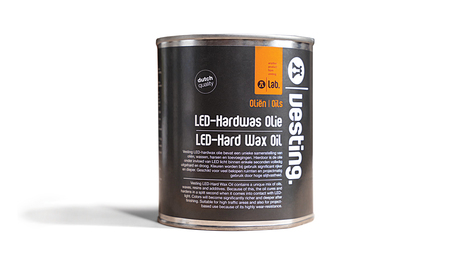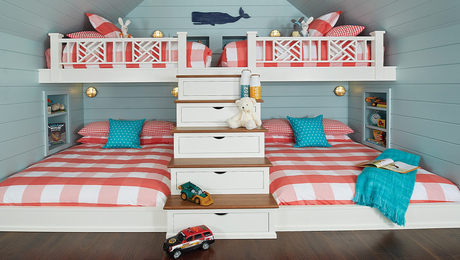What’s the Difference: Cabinet Door-catch Mechanisms
The choice comes down to aesthetics, function, and cost for these essential pieces of hardware.
Unless the doors on your kitchen cabinets will be hung with self-closing hinges, you’ll have to use catch mechanisms to keep them closed. Deciding which type of catch is best comes down to aesthetics, function, and cost.
Friction-fit
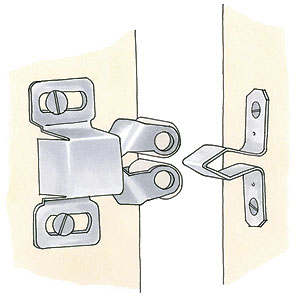
Strictly utilitarian and the least-expensive option, these catches consist of two polyethylene rollers mounted within the cabinet, and either a barbed tongue or a steel strike mounted on the door to engage the rollers. Friction-fit catches are among the easiest to install, but they are the lightest duty in terms of how firmly they hold the door closed.
Cost: less than $1 each
Magnetic
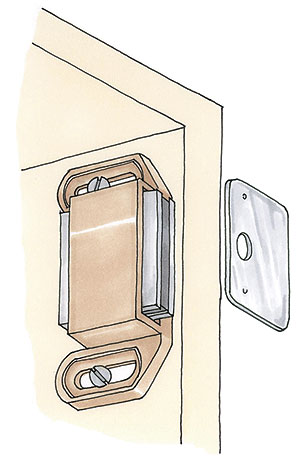
This type of catch works best when mounted close to the door pull. If that isn’t possible, as in double-door cabinets that don’t have a fixed divider, it’s best to mount a magnetic catch at the top and bottom of each door. Magnetic catches do not complement fine furniture well. However, because their contact areas are so large, they are useful in doors that have a tendency to shrink and swell due to seasonal changes.
Cost: $1 to $5 each
Touch latches
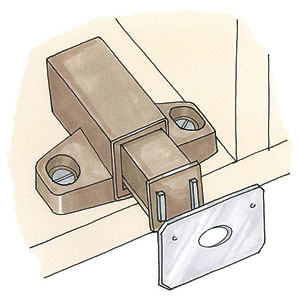
These catches are designed for doors that don’t have pulls. Their operation is counterintuitive: Pushing on the door releases a spring-tensioned mechanism that pops the door open. Touch latches are not the most durable and would be susceptible to failure under the stress of an actively used kitchen or bathroom.
Cost: $3 to $4 each
Bullet
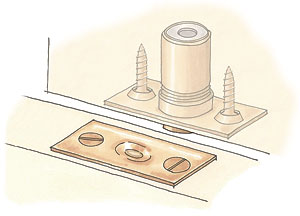
Although they come in a few different styles, bullet catches all operate on the same principle. A dimpled strike plate captures a spring-loaded steel ball bearing to keep the door closed. Bullet catches are finicky to install and fine-tune, and should be placed at the top and bottom of each door. They’re also unforgiving. They don’t operate smoothly on warped doors or on doors that endure even the smallest dimensional change due to fluctuating humidity levels. When fitted correctly, however, they’re one of the best-performing catches and are often used on high-end, contemporary furniture.
Cost: $2 to $8 each
Double-ball
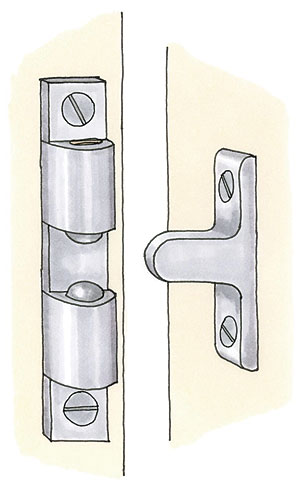
Very similar in operation to a bullet catch, a double-ball (also called a four-way) catch can be mounted anywhere, but works best installed vertically near the door pull. Unlike some other types of door catches, double-ball mechanisms can be adjusted to increase or decrease the tension on the strike plate, which alters the ease in which the door can be opened or closed.
Cost: $2 to $8 each
Surface-mounted
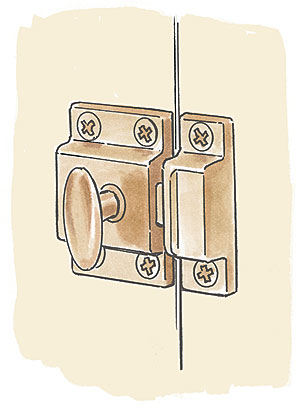
Beyond holding doors closed, these catches (also commonly referred to as latches) function as both the pull and the catch mechanism. Surface-mounted catches were often used on kitchen, pantry, and office cabinetry in the early 20th century. They are available in basic utilitarian versions or more-expensive polished brass or nickelplated varieties. They are among the easiest catches to install.
Cost: $5 to $15 each
Drawings by: Martha Garstang Hill
Fine Homebuilding Recommended Products
Fine Homebuilding receives a commission for items purchased through links on this site, including Amazon Associates and other affiliate advertising programs.

A House Needs to Breathe...Or Does It?: An Introduction to Building Science

Not So Big House

Musings of an Energy Nerd: Toward an Energy-Efficient Home














